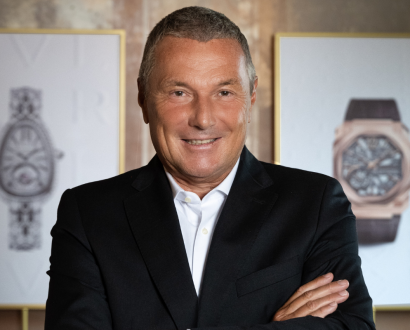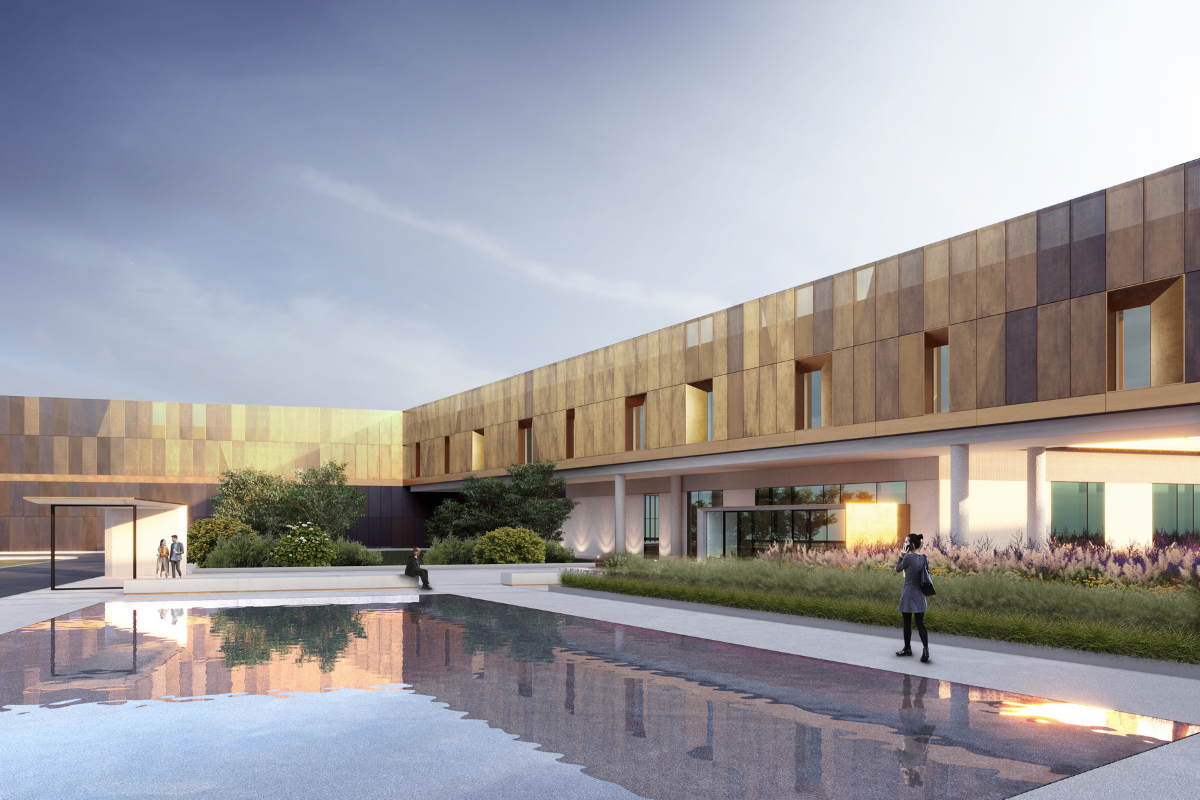Bulgari CEO: We’re doubling down on our plans to expand the Valenza jewelry production site

Forget its Roman headquarters or even parent company LVMH’s central Paris address. If Bulgari CEO Jean-Christophe Babin had to name one location that demonstrates how the link between tradition and innovation drives each undertaking and achievement at the luxury jewelry house, he’d pick its manifattura (production site) in Valenza, Northern Italy.
"Valenza is Italy’s goldsmithing district, a pole of artisanal excellence where the art of jewelry-making has been handed down from generation to generation since the Renaissance," Babin tells The CEO Magazine.
It was here in 2017 that the company inaugurated a new jewelry production site — described by Babin as "one of the largest investments ever undertaken by the company." Even the precise location drips with significance: built where Francesco Carmora, Valenza’s original goldsmith, opened his workshop in 1817, a move that put the sleepy town on the river Po on the map.
The complex is striking for the modern, low-slung, glass extension attached to the traditional Piemontese cascina (farmhouse). At 13,900 square meters, it’s also one of the largest jewelry production sites in Europe.
Since the start of the project, the Valenza site has been shaped by an ambition: to allow artisans to practice an ancient art with a future-oriented approach.
In essence, it’s a physical manifestation of Bulgari’s commitment to "safeguarding this unique know-how and engaging new generations of ‘intelligent hands,’ as we used to call them," he explains. To ensure that young artisans acquire the brand’s specific crafting techniques, the facilities include a training center, known as the Bulgari Academy.
A decade of innovation
In 2023, Babin will celebrate 10 years in the role. Reflecting on the past decade, he says he’s proud to have been Bulgari’s CEO during a time of maximum innovation.
"The biggest achievement – and challenge – was to start from our DNA as the Roman High Jeweler and bring this Italian-made excellence and artisanal mastery through all our business categories," he says. "We invested in the future and we opened to ecommerce and the digital world not by following trends but by creating our very own luxury experiences.
"This has not only allowed us to project our roots into the present day and beyond, but also to make revolutionary steps in traditional fields such as watchmaking. And of course, none of this would have been possible without a long-term vision, which has allowed us to radically grow in a business like hospitality, for example.
"To renew the appeal of our world every day, you need vision, projects and investments. But you can never forget your DNA, your roots and the value of craftsmanship."
Accelerated investment

Today, the global appetite for luxury jewelry is booming.
In 2021, the market was valued at US$23.2 billion, a seven per cent increase on 2019 figures, according to The New York Times.
At Bulgari, this means plans have been brought forward to further expand the Valenza production site with the construction of two new buildings that will connect to each other and the existing structure via an external suspended bridge.
"The initial idea was to maintain the current spaces for about 10 years, but the demand has increased more than expected and we have had to accelerate and anticipate the investment," Babin says.
In October 2022, the company made its plans public: once completed in late 2024, the size of the site will swell to 17,500 square meters. And, over the four years leading to 2028, it also intends to recruit 650 new employees, increasing the team to 1,400 employees.
"In a complex moment on a global level, we wanted to send a message of optimism, continue to think about the future and invest in our country."
The extension also includes a new training facility, Scuola Bulgari, which will run in collaboration with the Tari Design School. A center for external students, it will offer a professional path for tomorrow’s jewelers to follow while teaching them the most advanced goldsmith techniques.
"The project is part of our medium- and long-term vision," Babin says. "It’s a vision that responds to the markets where we have seen exponential growth in recent years." One of these is ecommerce, a channel he says grew during the lockdown. "That allowed us to reach very large territories such as Australia, impossible to cover with our boutique network alone."
Timing, it would appear, is everything. "In a complex moment on a global level, we wanted to send a message of optimism, continue to think about the future and invest in our country," Babin says, adding that the COVID-19 pandemic "gave us the opportunity to rethink some approaches. Finally, it has been a powerful accelerator that has shown us how much more we can do."
The investment also reinforces the importance of Bulgari’s unique Roman DNA. "All our jewels are made exclusively in Italy because we believe in traditional craftsmanship and in the added value of operating where there is true know-how."
A sustainable space
Sustainability is "not a new issue" for Bulgari, Babin explains and, once the works are completed, the production site will be a "100 per cent sustainable space".
Leadership in Energy and Environmental Design Gold-Certified since starting operations, concrete actions such as reducing the impact on the surrounding environment, incentivizing sustainable mobility, decreasing water consumption and optimizing energy performances through renewable or alternative energy sources aim to confirm the certification across the entire site upon its competition.
An "energy hub" to generate hot and cold fluids with minimum energy consumption, a geothermal field installed under the parking lot with the potential to produce approximately one megawatt of thermal energy and a new photovoltaic system are a few examples Babin gives of how the project will also allow the company to minimize the site’s carbon footprint.
"Other things, instead, will never change, like the need for beauty which is – and will always be – part of human nature."
"The expansion project includes further interventions aimed at drastically reducing its environmental impact and preserving the surrounding territory – in particular, the biodiversity of the Pecetto hills, right behind the production site," Babin adds.
He has a clear read on the mid-to-long-term path for Bulgari, but what about the overall sector? "The luxury market will keep changing, not only because the last two years have entirely revolutionized our way of living on a global level, but because our young consumers are made of conscious and informed people looking for brands with values in which to identify themselves," he says. "Some barriers – like the one between ecommerce and boutique experience – have fallen, while other opportunities await us on the horizon, such as the growth of new markets or the importance of the social responsibility aspect.
"Other things, instead, will never change, like the need for beauty which is – and will always be – part of human nature."